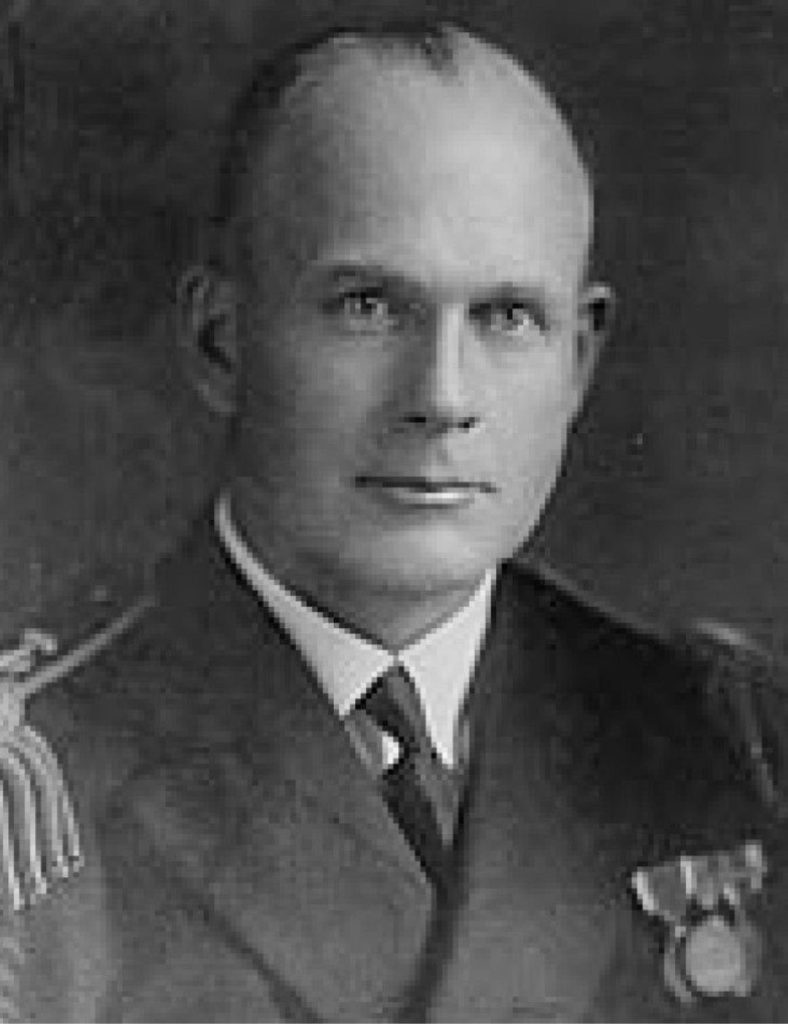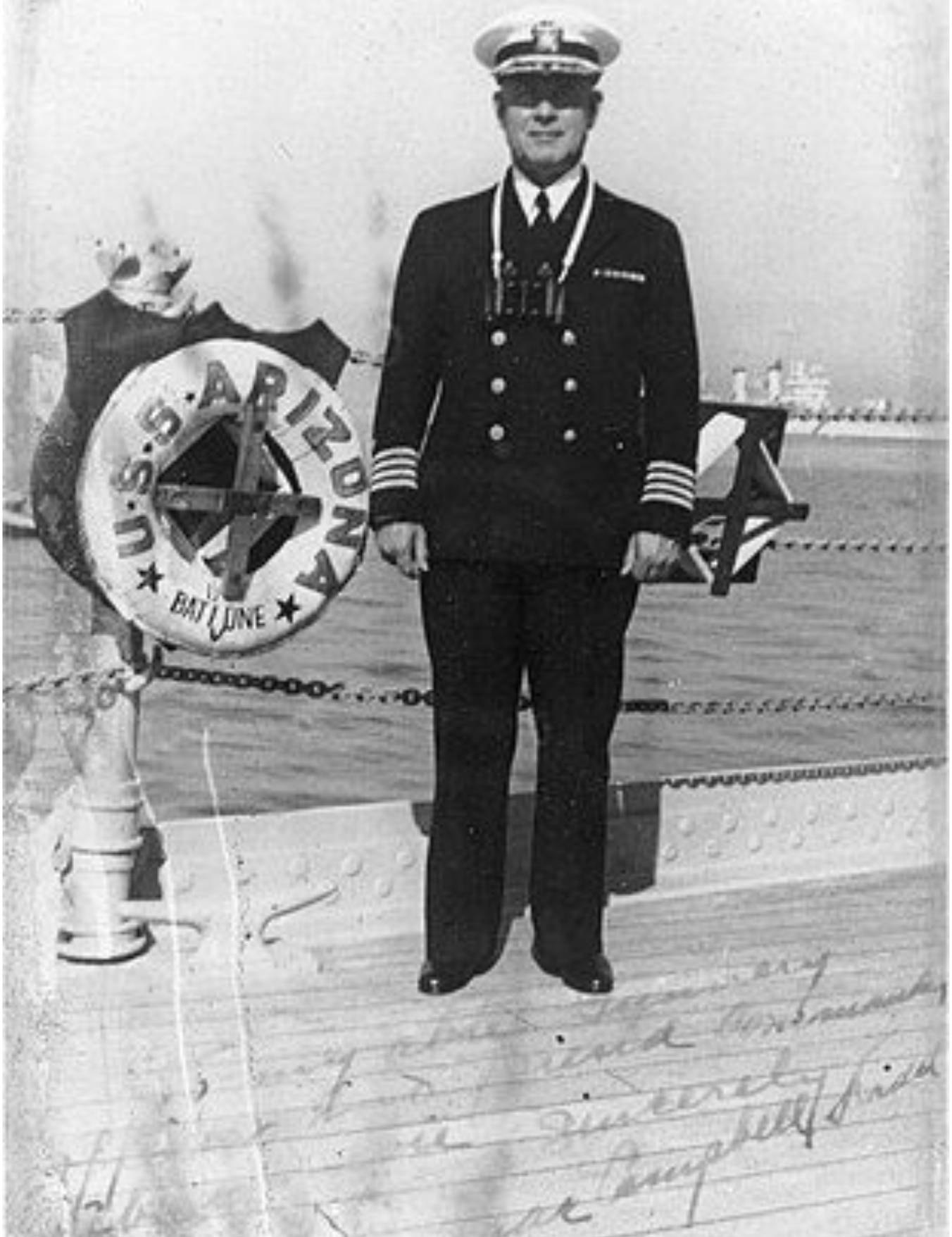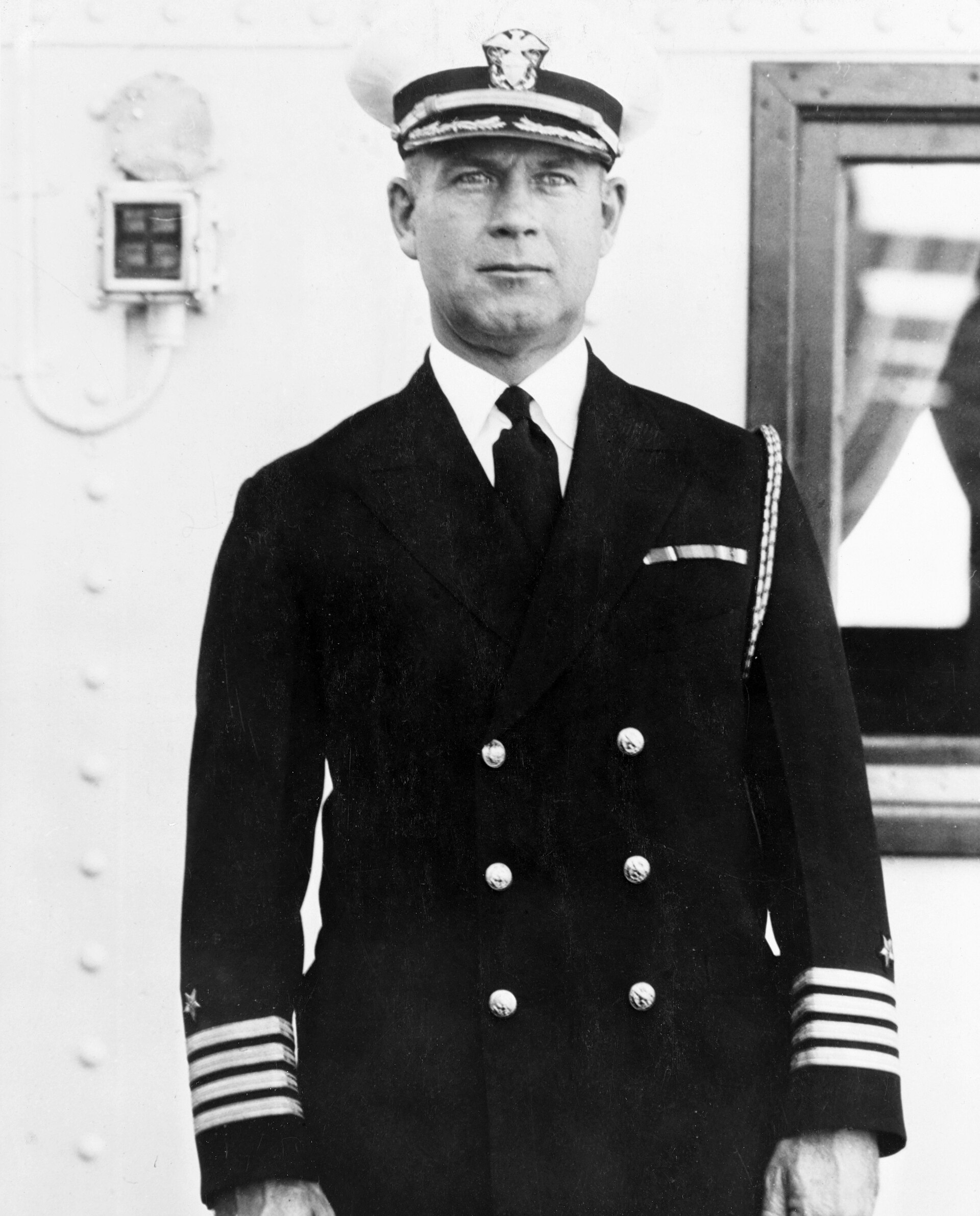RADM Isaac Campbell Kidd,
- Home /
- RADM Isaac Campbell Kidd,

- Rank: Rear Admiral
- Serial No: 0-005715
- Branch: US Navy
- Home Town: Cleveland, OH
- Date Of Birth: March 26, 1884
- Disposition: Unrecovered
- Family DNA on File: YES
RADM Isaac Campbell Kidd
At 0620 the morning of Dec. 7, 1941, sailor Lauren Bruner was on the deck of the U.S.S. Arizona when he spotted Rear Admiral Isaac Campbell “Cap” Kidd.
The admiral, a physical fitness nut, was soaked in sweat from a brisk walk. Bruner saluted, as did Kidd who then, with a slight smile, asked if the ship’s name painted on the stern was clean.
“I’m sure it is, Admiral,” Bruner replied.
Kidd walked on, and it was Bruner’s turn to smile. Months earlier he had been assigned to clean two long poles — yardarms — that stuck out about 60 feet above the admiral’s deck. It was a stinky, dirty, and dangerous job. One day, to see what would happen, Bruner dropped a wet sponge. It missed Kidd but splashed his Marine escort. “Sorry, sir, it slipped,” Bruner called out.
When Bruner tried the stunt a second time he was punished with a new assignment. Five days a week for a month he had to hang over the side of the ship in a chair and clean the ship’s name.

Kidd had a reputation for knowing details about many of the 1,513 other men on the Arizona and their families. Still, Bruner was impressed that the commander remembered his name. Kidd was “all Navy and most of the crew was scared to death of him, myself included,” Bruner recalled years later.
Barely two hours after they shared their little joke, Kidd was killed when Japanese planes bombed and sank the Arizona. Bruner, a fire controlman third class and one of 337 survivors, was badly burned.
Kidd’s body was never recovered, but several days later a salvage crew found his 1906 Naval Academy class ring fused to the steel top of the Arizona’s conning tower.
Kidd was born March 26, 1884 in Cleveland, Ohio. His father, also named Isaac, was a liquor wholesaler and Irish immigrant. His mother, Jemima Campbell Kidd, was a homemaker and Canadian immigrant. The family included three other children, including another son who graduated from the Naval Academy.
Young Issac graduated in 1902 from West High School, then headed to the Academy. The school yearbook, The Lucky Bag, described him as a “fat blond with an appetite. His emblem is the meal pennant and three-repeater hoisted in the most conspicuous place. Fasted to reduce weight first class year, but claims he did it on a bet. Has a striking figure and a sweet-toned voice that won him the adjutantcy of the second battalion… Born to command and captain of the all-biscuit team.”
Kidd married a Cleveland woman, Inez Gillmore, in 1911. They had a daughter who died as an infant and a son, Isaac Campbell Kidd Jr.
Kidd’s career took him around the world. He was commanding officer of the Arizona from September 1938 until February 1940, when he became a rear admiral and commander of Battleship Division One — which included the Arizona, Nevada, and Pennsylvania. The Arizona was the flagship of BatDiv I, so Kidd, known as Cap, had his quarters there.
Kidd was awarded the Medal of Honor for his performance during the attack. Though he was certainly brave it’s unclear how his actions were more heroic than the thousands of other Sailors, Marines, Soldiers and civilians at Pearl Harbor that day. Sixteen men were awarded the Medal of Honor, while 3,581 were killed or wounded. The attack lasted less than two hours and destroyed or damaged 19 ships.

Less than two weeks after her husband was killed, Jemima Kidd watched their son, then 22, graduate from the Naval Academy. He was supposed to be part of the spring 1942 class, but even before Pearl Harbor the Navy announced that graduation would be held early because more manpower was needed to prepare for possible war.
Kidd Jr. went on to a 40-year Navy career in which he became a full admiral. He retired in 1978 as commander in chief of the Atlantic Fleet and supreme commander of NATO forces in the Atlantic.
Sources:
Special thanks to Cappy Kidd for stories and support of Operation 85. We will miss him greatly!
Special credit to Lauren F. Bruner’s memoir, “Second to the Last to Leave USS Arizona,” by Edward J. McGrath and Craig O. Thompson. Other sources include: U.S. Naval and Heritage Command; the Encyclopedia of Cleveland History by Case Western Reserve University; the Associated Press; United Press; The New York Times; Naval Academy yearbook; Census, “Battleship Arizona, An Illustrated History,” by Paul Stillwell, the National World War II Museum.
